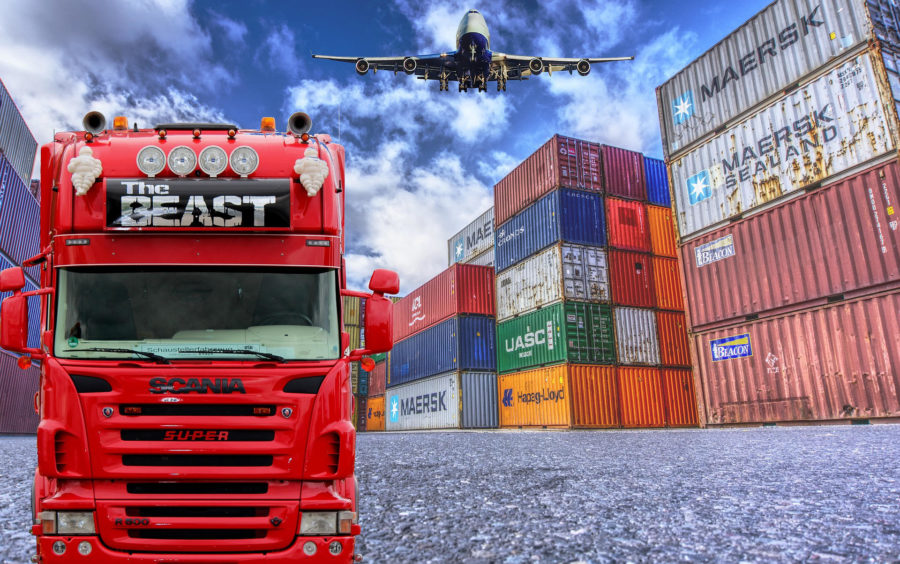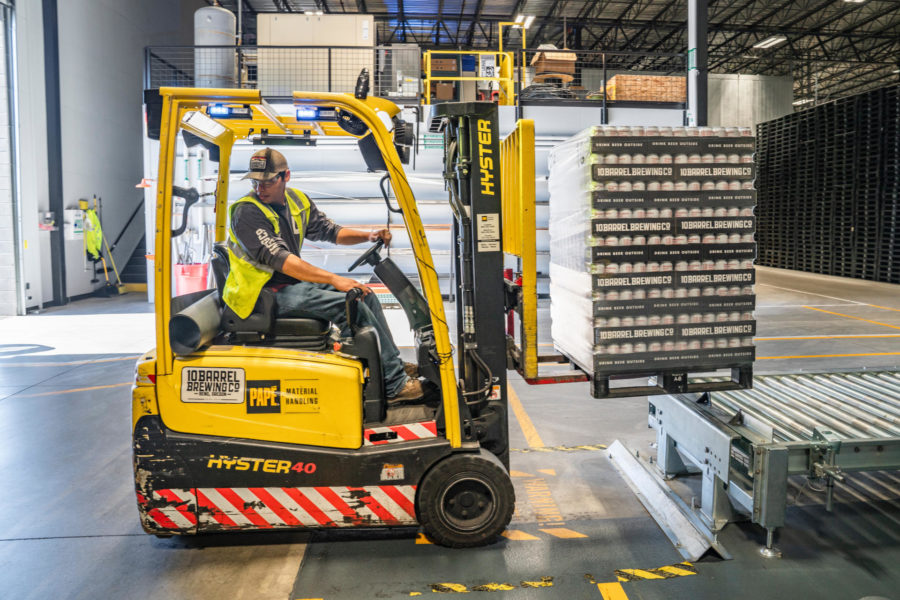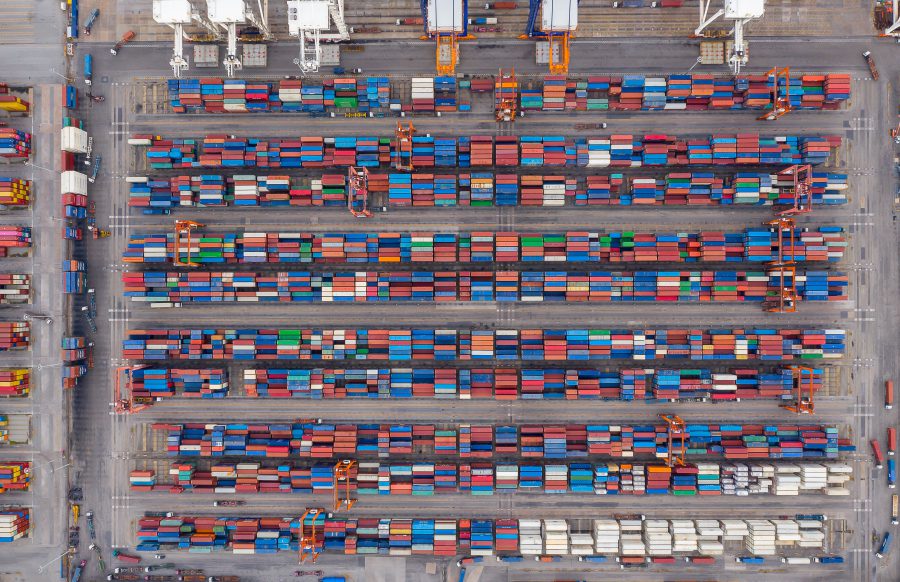Summary
With rising customer expectations and intense competition in the market, businesses around the world have turned to third-party logistics (3PL) providers to professionalize their supply chain management.
Business managers understand that 3PL and 4PL providers allow them to tap into more sophisticated supply chain resources, such as the latest operations technology to support increasingly complex logistics operations.
By eliminating the need to invest in transportation and warehouse rent, equipment and personnel, and in taking over the entire supply chain operations, from billing and auditing to staffing and training, a 3PL and 4PL provider cuts an entire department’s expenditures from the operational costs of a business. Additionally, due to their expertise, 3PL and 4PL providers also improve the efficiency of your supply chain, allowing your business to develop a robust logistical network with higher returns and lower risks.
When 3PL and 4PL vendors are not efficient, businesses end up hiring extra manpower to compensate for the shortfall, which ultimately increases labor costs. Apart from wasted monetary resources, a poor 3PL and 4PL vendor will also cost your business time and thus, potential money. On the other hand, if your 3PL and 4PL vendor was delivering an efficient end-to-end supply chain, your business would produce inventory in the required amounts and quickly ship to customers in the correct timeframe and quantities.
With an increasingly digitized business environment, vendors are expected to be able to provide real-time status updates about shipments, order tracking and the availability of inventory at warehouses. Moreover, a major function outsourced to a 3PL and 4PL vendor is inventory control. Remember that when this is compromised, several business outcomes are adversely impacted.
Index
- Your logistics costs will be higher than the industry average for your business volume
- Your business productivity suffers, which affects profitability
- You don’t have access to the right information for effective decision-making
- You lose control over your inventory
- You suffer losses in the form of frequently damaged inventory
- Your reputation for delivery timelines gets damaged
- Employee turnover increases at warehouses
- You will lack the necessary technological support
8 Ways a Poor Logistics Services Provider Impacts Your Business
With rising customer expectations and intense competition in the market, businesses around the world have turned to third-party logistics (3PL) and fourth-party logistics (4PL) providers to professionalize their supply chain management. The latest research by Gartner Inc. indicates that more than 80% of professionals plan to expand their logistics outsourcing budgets beyond warehousing and fulfillment in 2020.
The rationale behind this trend is that specialists will simply do the job better, leading to improved order turnaround times, fewer losses, more transparency and increased overall efficiency. Moreover, business managers believe that 3PL providers allow them to tap into more sophisticated supply chain resources such as the latest operations technology to support increasingly complex logistics operations.
In theory, this is all correct. However, a key aspect of ensuring improved operations is making the right choice of 3PL and 4PL provider for your business. While there are many benefits of outsourcing your company’s logistics, there are as many disadvantages to bringing on board an inadequate 3PL and 4PL provider.
Below is a breakdown of the many ways a poor choice of logistics service provider can hamper your business growth:
1) Your logistics costs will be higher than the industry average for your business volume


On paper, a 3PL provider is meant to ultimately save your business money in the long term in the following ways:
- Costs elimination: By eliminating the need to invest in transportation and warehouse rent, equipment and personnel, and taking over the entire supply chain operations, from billing and auditing to staffing and training, a 3PL and 4PL provider cuts an entire department’s expenditures from the operational costs of your business.
- Improved operations: Due to their expertise, 3PL and 4PL providers also improve the efficiency of your supply chain, allowing your business to develop a robust logistical network with higher returns and lower risks.
However, all of this cost-cutting is contingent on the efficiency of the vendors themselves. If the quality of a vendor’s operations is below industry standard, or they simply do not possess the expertise necessary for your industry, then they will not be able to deliver on the capital-saving front. In fact, the opposite will be true.
As a result of the vendor’s inability to adequately manage your supply chain, businesses can incur numerous kinds of additional costs:
- Increased raw material costs: When businesses do not have a clear picture of customer demands, they can underestimate the quantity of raw material needed during a particular buying season. As a result, raw materials may need to be ordered on an urgent basis, which raises costs.
- Higher shipping costs: To compensate consumers for lost or delayed packages, and retain dissatisfied customers, businesses will have to undertake a higher volume of rush orders, which are costlier to ship. These costs take away from the profits of the generated business.
- Increased labor costs: When a vendor is not efficient, businesses often have to hire extra manpower to compensate for the shortfall. This higher than expected staffing cost impacts the business’s costs of goods sold and cuts into the expected profits.
These serve as expensive endeavors for businesses, costing valuable time, significant human resources and redirected capital. Ultimately, finding a replacement 3PL and 4PL vendor will be an additional big expense.
In contrast, your market competitors who have found better-suited partners are likely to be reaping the benefits of cost savings and be leveraging the freed-up time and capital for business growth.
2) Your business productivity suffers, which affects profitability


Apart from wasted monetary resources, a poor 3PL and 4PL vendor will also cost your business time — and thus, potential money your business could have earned. Instead of enjoying the liberty of a hands-off approach, your company’s management will have to intervene in the supply chain management to compensate for shortfalls in the system.
This affects your business productivity in multiple ways:
- Inefficiency: This is an incredibly haphazard way of managing the business and renders the purpose of outsourcing the supply chain management ineffective.
- Disruptions: It prevents managers from focusing on the business outcomes that are assigned to them in their roles.
- Future growth issues: It compromises focus on long-term planning. If they are constantly putting out fires, then managers cannot focus on strategic thinking.
Moreover, manufacturing and warehouse personnel’s performance is also negatively affected:
- Delays: They are unable to deliver work on time, given the prolonged wait for raw materials to reach their worksites, and delayed instructions about order shipping requirements.
- Reduced revenues: As a business’s overall productivity decreases, its cost of goods sold rises. This impacts their profits and their ability to increase prices in the future. When a business is struggling to maintain consistency in its supply and delivery, even a nominal increase in product pricing can turn away customers permanently.
The investment that is put into outsourcing logistics is, therefore, more or less wasted, and the business’s bottom line is also compromised.
Management will notice the ill effects of a poor 3PL and 4PL partnership particularly in peak sales seasons, such as the major holidays. If a vendor is struggling with your business logistics in regular months, they will be doubly struggling in Ramadan. And it will be hard to ignore the opportunity cost when a prolonged period of poor service translates into lost sales, disenchanted customers, and a tarnished reputation.
On the other hand, if your vendor was delivering an efficient end-to-end supply chain, your business would produce inventory in the required amounts, and quickly ship to customers in the correct timeframe and quantities.
3) You don’t have access to the right information for effective decision-making
A litmus test for a good 3PL and 4PL partnership is the level of transparency offered by the supplier. With an increasingly digitized business environment, suppliers are expected to be able to provide real-time status updates about shipments, order tracking and the availability of inventory at warehouses. In doing so, they help their clients’ operations and shipments flow smoothly and seamlessly.
Therefore, businesses know they’ve entered into a bad deal when their partner is unable to provide requested information promptly and accurately. When a company is unable to readily communicate with customers about their orders, this can result in a negative chain reaction that culminates in lost sales and customers — an outcome most businesses cannot, and will not tolerate for long.
Moreover, without the necessary data, you can’t make many other fundamental decisions as well, such as whether there is a need to hire more employees or order more raw materials.
When companies are not able to receive timely updates about purchasing and sales history, marketing projections, stock availability, quotations, and product development requirements, their managers’ ability to make agile decisions is curtailed.
This ultimately causes the business’s potential for growth to be compromised. It also hampers the impression of the business in front of external stakeholders who scrutinize these aspects of the business performance.
4) You lose control over your inventory


A major function outsourced to a 3PL and 4PL vendor is inventory control. When this is compromised, several business outcomes are negatively impacted:
- Inefficient stocking: With a lack of clarity about inventory, there is a danger of overstocking it. Unsold inventory is a waste of raw materials and occupies expensive warehouse space.
- Order delivery issues: If a 3PL vendor fails to deliver on the inventory control and reporting front, your company will experience issues in receiving and picking orders. Plus, a warehouse that is full of unsold goods is likely to fall into a disorganized mess, leading to difficulties in shipping orders in a timely manner. This ultimately leads to unhappy customers and lost business.
- Stock level discrepancies: The lack of transparency will also make it impossible to determine when supply levels at warehouses need replenishing and lost products will be difficult to track. Low inventory can also impact a company’s ability to deliver their products on time and on target, negatively impacting their reputation and, again, potentially resulting in lost business.
As such issues mar the efficiency of the inventory control, costs will rise and customer service suffers. To retain unhappy customers, the business may need to implement measures like expedited shipping, which will increase your transportation budget unnecessarily.
5) You suffer losses in the form of frequently damaged inventory
A telltale sign of an inadequate 3PL and 4PL vendor is the inability to manage a warehouse effectively. There are inventory horror stories circulating throughout the kingdom, indicating that not all 3PL and 4PL companies are quality conscious, which ultimately results in damaged and wasted stock.
There are some key areas of warehouse management where poor 3PL and 4PL vendors are lacking:
- Process improvements: A good partner would be vigilant about identifying process improvements at your company’s warehouse, like minimizing direct handling of goods and manual tracking, ensuring proper labeling, and timely storage of incoming and outgoing goods. All of these processes contribute to the safety of the stock in the warehouse. A poor vendor is fairly lax about these practices, which translates into losses at the warehouse.
- Material handling equipment: A good vendor would also see the value of investing in material handling equipment where it is necessary. Equipment like pallet jacks, pallet inverters, hoists, and conveyor belts require heavy initial investment as well as costs associated with maintenance and future modifications.
- Shelving and racking: A good 3PL and 4PL vendor would scrutinize the racking system at warehouses, ensuring that their design suits the type of stock, and that protection is added where necessary, as well as monitor other warehouse design factors, such as overhead lighting. While the costs of such upgrades would deter a poor vendor, a high-quality service provider would see a long-term return on investment.
- Packing protocols: A good vendor will make sure that proper packing protocols are implemented at the warehouse. When freight is improperly packaged, there is a higher risk of damage during shipment. It is also becoming increasingly difficult to claim damages as carriers do not accept liability for improper packaging.
- Staff management: A good vendor will ensure that warehouse personnel is regularly trained and is held to a reasonable work schedule that is not likely to bring about exhaustion or burnout. Failure to do this would result in workplace accidents, which can also damage stock.
6) Your reputation for delivery timelines gets damaged
One of the costliest outcomes of a poor 3PL and 4PL partnership is damage to your company’s reputation. All it takes is a couple of botched deliveries for customers to lose trust in your company. Winning customers back not only takes up managers’ time and energy but also requires a budget allotment, especially if you’re continuing to work with the same vendor.
In this scenario, as you cannot rely on your inventory reporting, your company will need to arrange for additional safety stock to mitigate the risk of any further issues in-order delivery. Some estimates say that companies have to add up to 50 percent more for backup, which requires increased storage space and raises inventory costs.
7) Employee turnover increases at warehouses


Some businesses may feel forced into needing to hire an inventory planner to supplement the 3PL and 4PL company’s operations with an internal employee to bring efficiency into the vendor’s management. However, this shouldn’t be the case with a competent vendor, unless agreed upon at the outset.
This haphazard management also threatens employee satisfaction at the warehouse, as the staff is more likely to quit due to a lack of clear direction and a frustrating work environment.
8) You will lack the necessary technological support
It is necessary to determine the long-term vision of a 3PL and 4PL vendor before engaging them. A vendor that regularly invests in research and development and keeps its operations at par with technological advancements will be able to support your company’s future growth as well.
These include transparency-enhancing software that provides real-time data and tracking facilities that help optimize costs and automated systems that reduce human error. These companies recognize that adopting the latest software and technology into the supply chain offers significant advantages to them and their clients.
An inadequate 3PL company will not have its eye on the bigger picture and keep your company’s growth mired in the status quo. In contrast, your rival businesses may be exploiting the advantages that come with a logistics partner that is committed to optimizing the supply chain at every point in time.
Knowing what can go wrong using a poor 3PL and 4PL vendor can be the difference between a successful and unsuccessful logistics operation. Those looking to connect with a leading 3PL and 4PL provider, in order to set up a sophisticated supply chain, using the latest operations technology, should get in touch with SBT to see how we can add value to your operations. Click here to arrange a consultation.







